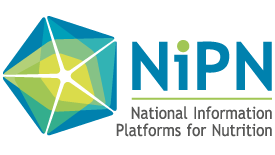Activity A: Mapping the key strategic opportunities for influencing policy, programming and investment decisions (1/2)
The mapping addresses the following questions:
- What upcoming priority decisions are expected to be made in nutrition?
- To which specific policy, programme or plan will they relate?
- Who will make the decisions?
- When will the decisions be made?
- What evidence and information are likely to be needed?
- Which administrative level is the focus of the decision (e.g. central or sub-national)?
This information is gathered by the NIPN country team through a desk review of existing literature (see additional information below).
The information should be verified and amended through stakeholder discussions with key government sectors, donors, UN and civil society groups, facilitated by the NIPN country team. The SUN platform may offer a good opportunity for these stakeholder discussions. The discussions may be in the form of focus groups or bilateral discussions and are particularly helpful in identifying the key opportunities to influence decision making (see next page).
The mapping aims to achieve the following:
- Identify at which stage the MPPA is or sector-specific nutrition policy and plans are;
- Assess coherence between the MPPA and sector-specific policies and plans (see the Mali example below);
- Identify upcoming ’windows of opportunity’ to influence decision making (e.g. the next 6 or 12 months);
- Depending on the above, confirm which policy, plan or programme the NIPN cycle of ‘questions-analysis-findings’ will focus on;
- Identify what types of information or findings are likely to be considered for these upcoming decision-making opportunities, and by when;
- Ensure that the NIPN operational cycle will provide answers and recommendations in line with the decision-making calendar;
- Define the target audience for the last step of the NIPN operational cycle regarding communication and dissemination of the answers to the policy questions.
In 2014, the Mali Government was in the process of drafting a ten-year Plan for Sanitary and Social Development (PDDSS) 2014-2023. At that time, the National Evaluation Platform (NEP) team reviewed the draft 5-year PDDSS and a comparison with the Programme of Sanitary and Social Development III (PRODESS III), revealed the following:
- The target mortality rates were already achieved and the baseline information of several interventions and targets were not coherent between the PDDSS and PRODESS III.
- The target population groups of the different health and nutrition programmes of the health sector were not harmonised.
- The proposed intervention package in PDDSS did not seem to correspond with the ambition of the mortality reduction targets of the PDDSS.
Confronted with this lack of coherence between the MPPA and sector-specific policies and plans, the relevant stakeholders decided to work towards a common and harmonised mortality reduction target which could be realistically achieved within the time frame of the PDDSS. The NEP team formulated policy questions in relation to the PDDSS targets and the proposed intervention packages, which were validated by the government stakeholders.
The finalisation of the PDDSS was postponed until 2015 to allow analyses using the Lives Saved Tool, a modelling software.
The analyses were carried out within the promised 6 months and results were available on time to redefine the PDDSS targets and refine the intervention packages, as part of the mid-year review process of PRODESS III.


